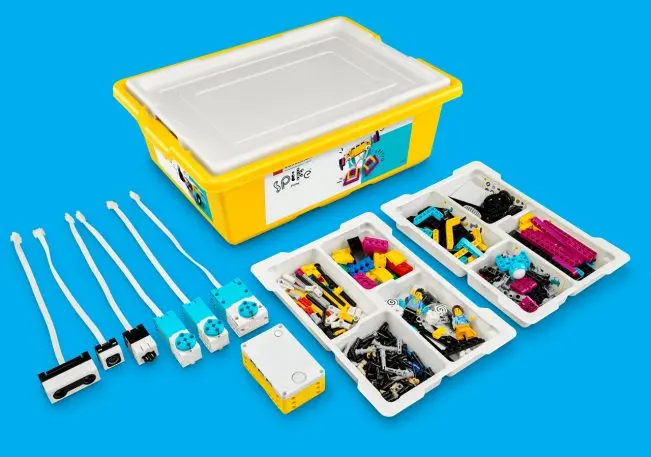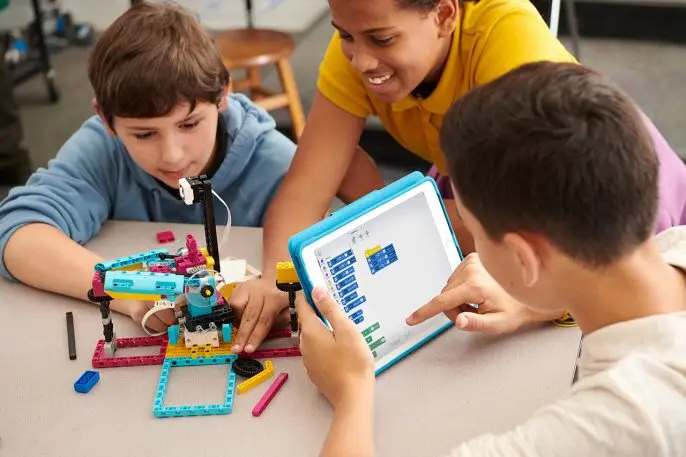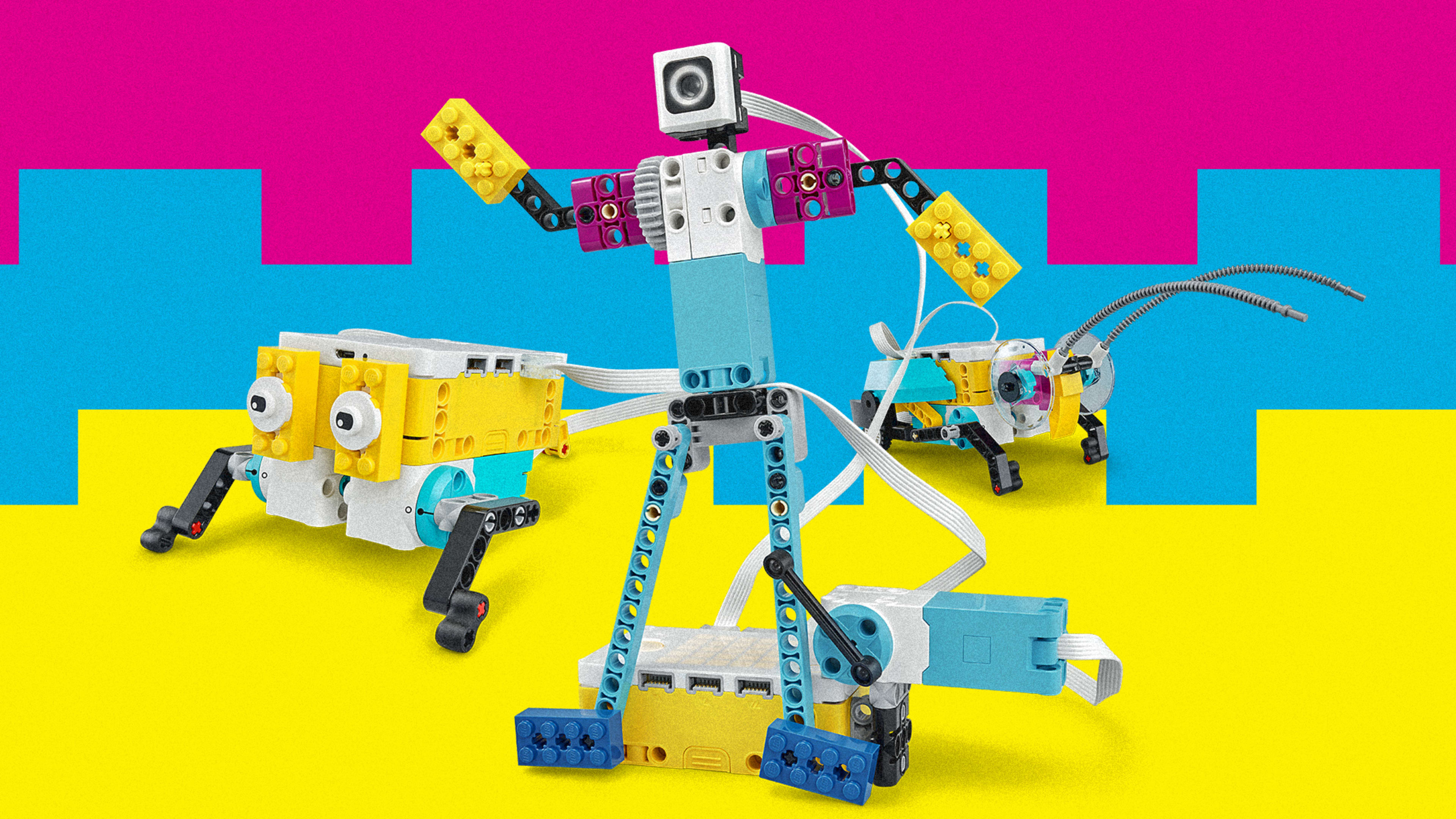With its bright, flat cables hanging out everywhere, it may look like some retro computer cobbled together in a 1980s garage in the colorway of a 1990s shoe, but this is Lego’s latest, most technologically advanced set. It just happens to be aesthetically inspired by Lego’s very first robotics kits. Its name is Spike Prime, and it’s been designed to teach engineering to kids in sixth to eighth grades while keeping it compatible with all Lego bricks. Sadly, you won’t be able to buy it in stores.
The set has been developed by Lego Education, a division that is separate from Lego itself. The group’s mission is to use hands-on learning to better teach kids and adults alike. In fact, Lego Education–and the Lego Foundation–have been working for decades with institutions like the MIT in developing and researching, not gadgets, but learning-through-play methodologies, all centered around five core human principles: emotional, social, creativity, cognitive, and physical abilities. Lego Spike is the latest application of their research.

Back to basics
I remember when the original Lego Mindstorms, called the Robotics Invention System, came out back in 1998. It was a clever but barebones and challenging system that caught the attention of the most adventurous teachers, parents, and kids.
For four decades, the education arm of the Danish company has been evolving its programmable robotic system into a sleek white and gray set with really advanced sensors, capabilities, and even different operating systems and programming languages. That became the household name “Mindstorms.” The latest version, released in 2013, still comes in two versions: one for consumers who want to play with open-ended robotic creations, and another one, sold directly to schools by Lego Education, that is geared toward classroom settings, with more sophisticated parts and focused tutorials that slowly ramp up a curriculum in difficulty.

Spike is solely directed to schools, according to Lego Education, and the new Spike draws inspiration from the original Robotics Invention System both in terms of aesthetics and building techniques. That means Spike doesn’t use the same design as any modern Mindstorms. The color palette has been updated, but it has the same wide range of hues, reminiscent of the first Mindstorms, far from the understated, and less joyful, look of the latest versions.
In terms of building abilities, the new system is also fully compatible with whatever Lego System bricks you have around. These are the original founding interlocking mechanism bricks that are the universal building blocks of Lego. In fact, Spike puts the most basic block of them all at its core: the classic four-by-two brick. This allows users to expand builds with ease.
That’s not to say that Spike has left behind Lego Technic, which has been the core of Mindstorms for a while. Technic allows for very advanced mechanical assemblies with six degrees of freedom–like the world’s fastest Rubik’s Cube solver–using pieces that will remind you of plastic Erector Sets: axles, bricks with holes, pins, bushing, and gears. This system, like the bricks, is at the core of the latest Spike. In fact, it adds new big frames and beams that are designed to accelerate the robot building process, plus a new wheel design that has been designed for minimal contact surface with the ground in order to have less friction and more control. In total, the Spike Prime set contains 523 pieces, while a expansion set adds 603 pieces to the mix.
The Spike Prime Hub–the heart of the system–has a new processor unit that connects to different sensors, including optical, touch, a six-axis Gyro with three-axis accelerometer, and a three-axis gyroscope–plus expansion USB ports and Bluetooth.
The brains and sensors are programmed through an app available across iOS, Android, and desktop operating systems. Like the younger kids-oriented Lego Boost, Spike uses a graphical programming method. But this one is a lot more complex and based on Scratch, the free popular programming language for kids developed by MIT. These graphical building blocks have been designed to make programming fast and easy while allowing kids to think about logic and data management. It’s not so much about learning to code but to learn about engineering principles and problem solving.
Lego Education has designed four learning units for Spike’s launch, with 33 lesson plans. Thanks to the design of the lessons and the graphical programming, they can be completed in 45-minute classes.
The new Lego Spike will be available in August 2019, but educators can preorder it today in the U.S.
Recognize your brand’s excellence by applying to this year’s Brands That Matter Awards before the early-rate deadline, May 3.







